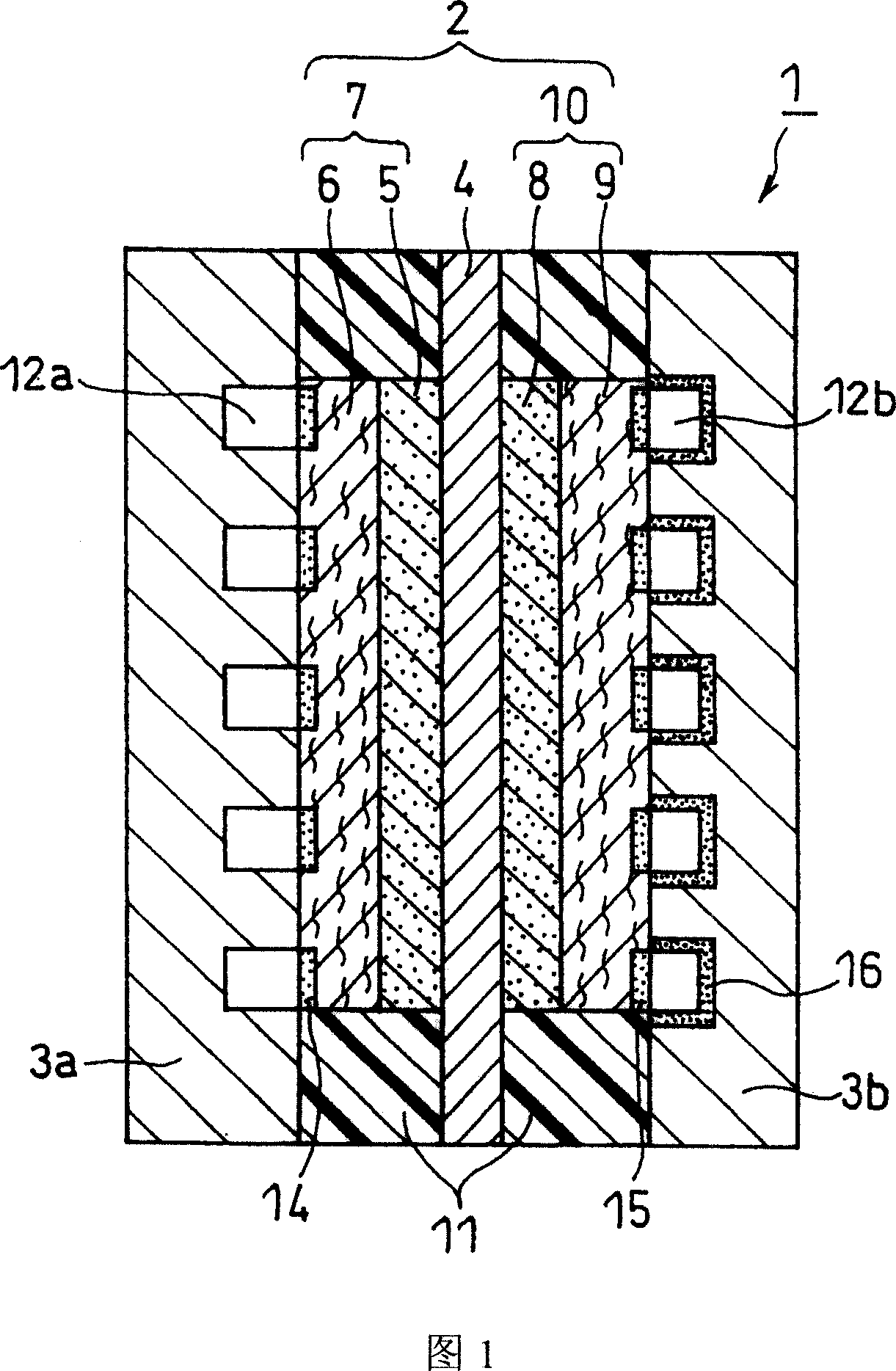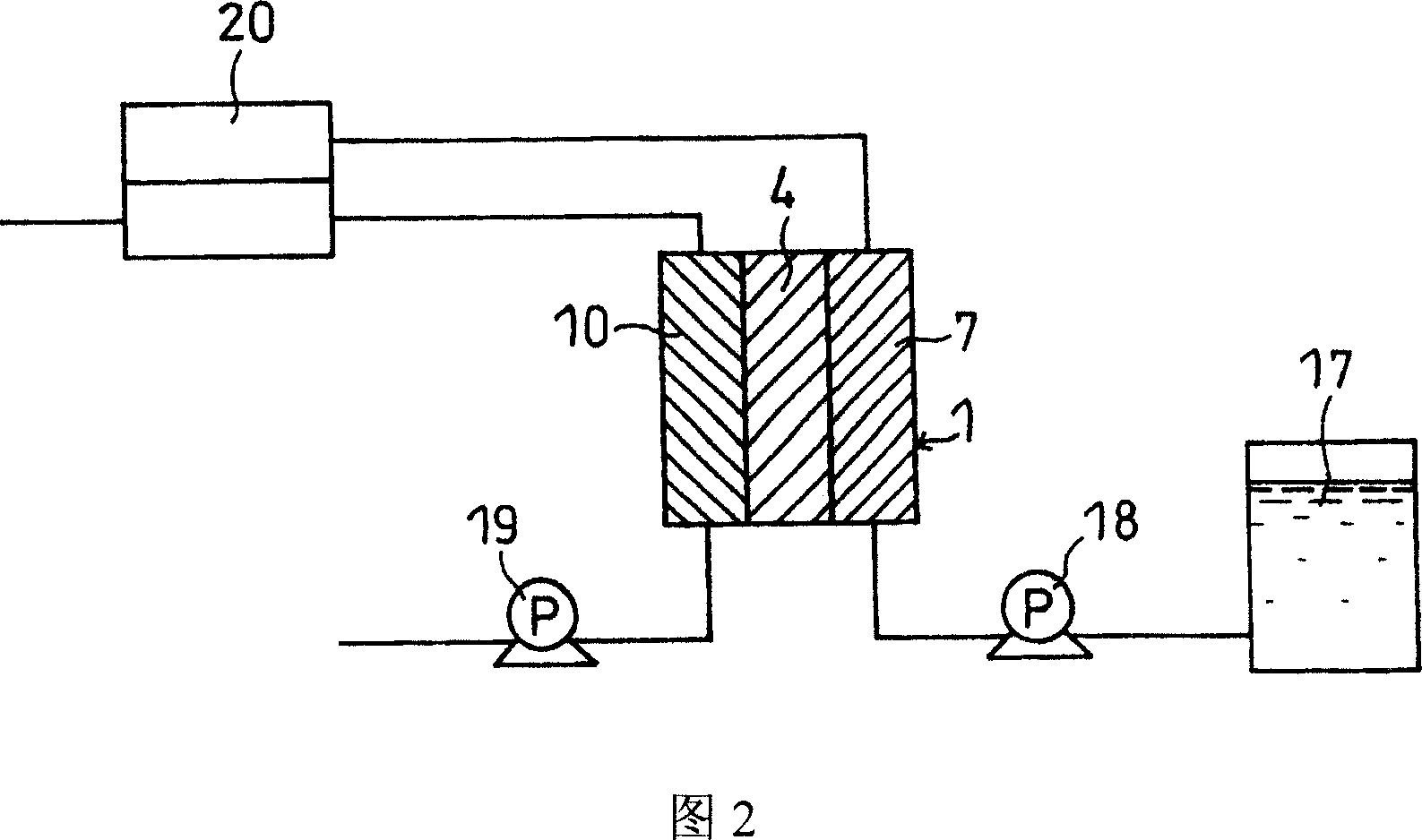Direct-type fuel cell and direct-type fuel cell system
A fuel cell, direct technology, applied in the direction of fuel cells, fuel cell additives, fuel cell components, etc., can solve the problems of insufficient fuel, no cathode, and weakened discharge performance, etc., to achieve the reduction of fuel usage rate , The effect of suppressing the decline of fuel usage rate and reducing the phenomenon of crossing
- Summary
- Abstract
- Description
- Claims
- Application Information
AI Technical Summary
Problems solved by technology
Method used
Image
Examples
Embodiment 1
[0095] A fuel cell as shown in Figure 1 was prepared.
[0096] (i) Catalyst layer on the anode side
[0097] Anode-supported catalyst particles were prepared by loading 30 wt% of platinum microparticles and 30 wt% of ruthenium microparticles on conductive carbon black particles. The average particle size of platinum particles and ruthenium particles is 3 nm, and the average primary particle size of carbon black particles is 30 nm (ketjen black EC, purchased from Mitsubishi Chemical Company).
[0098] The isopropanol aqueous solution in which the anode-supported catalyst particles were dispersed was mixed with the ethanol in which the polymer electrolyte was dispersed. The mixed solution was stirred in a ball mill to prepare an anode catalyst paste. The weight percentage of conductive carbon black particles and polymer electrolyte in the anode catalyst paste is 2:1. The electrolyte used was perfluorocarbon sulfonic acid ionomer (Flemion, available from Asahi Glass Co., Ltd.)...
Embodiment 2
[0111] When forming the diffusion surface layer 14 (PTFE / silicone resin layer) on the substrate of the diffusion layer 6 on the anode side, change the number of repetitions of spraying and air drying, and change the high-temperature drying temperature to 80°C for 60 minutes, so that the diffusion surface The thickness of layer 14 becomes about 100 μm. A fuel cell (cell B) was prepared in the same manner as in Example 1 except for these modifications.
Embodiment 3
[0113] Carbon paper (TGP-060, purchased from Toray Industries) with a thickness of 180 μm was used instead of TGP-H120 as the substrate of the diffusion layer 6 on the anode side. Simultaneously, when forming the diffusion surface layer 14 (PTFE / silicone resin layer) on the substrate of the diffusion layer 6 on the anode side, change the number of repetitions of spraying and air drying, and change the high-temperature drying temperature into 70° C. and dry for 20 minutes, thereby The thickness of the diffusion surface layer 14 was made to be about 5 μm. A fuel cell (cell C) was prepared in the same manner as in Example 1 except for these modifications.
PUM
| Property | Measurement | Unit |
|---|---|---|
| critical surface tension | aaaaa | aaaaa |
| surface tension | aaaaa | aaaaa |
| surface tension | aaaaa | aaaaa |
Abstract
Description
Claims
Application Information
 Login to View More
Login to View More - R&D
- Intellectual Property
- Life Sciences
- Materials
- Tech Scout
- Unparalleled Data Quality
- Higher Quality Content
- 60% Fewer Hallucinations
Browse by: Latest US Patents, China's latest patents, Technical Efficacy Thesaurus, Application Domain, Technology Topic, Popular Technical Reports.
© 2025 PatSnap. All rights reserved.Legal|Privacy policy|Modern Slavery Act Transparency Statement|Sitemap|About US| Contact US: help@patsnap.com


